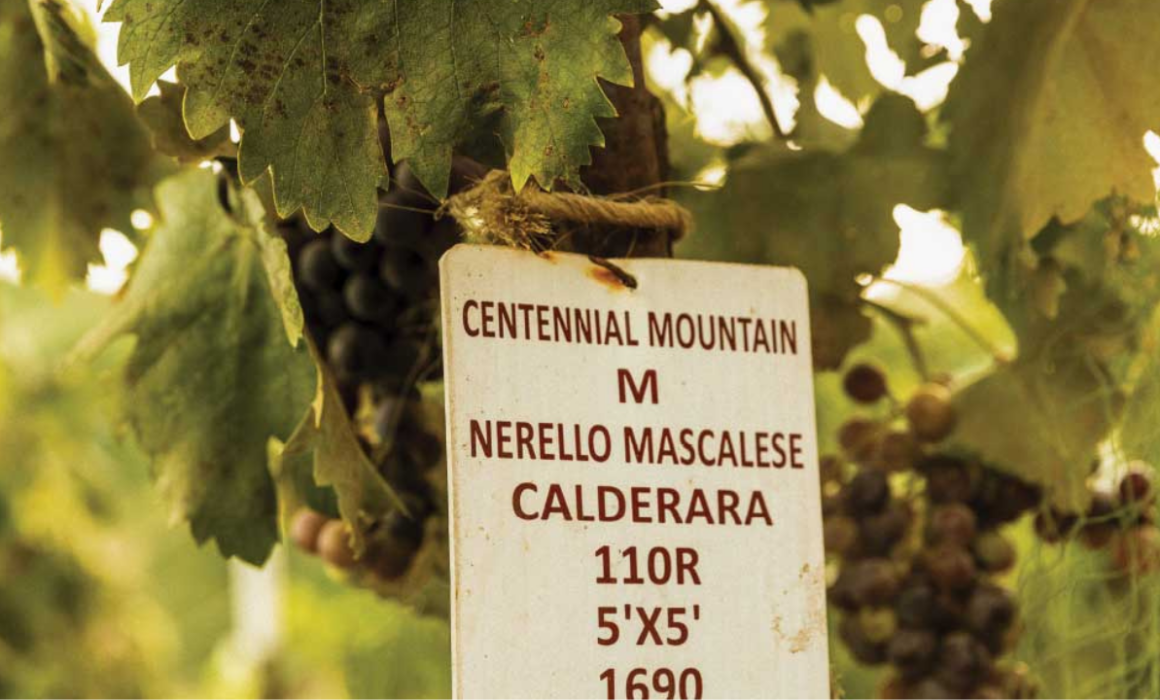America’s First Carricante and Nerello Mascalese Planted in Sonoma County
By Virginie Boone
Italian varieties are no stranger to Sonoma County, a region rich in Italian heritage and history. The majority of these varieties exist in small pockets of acreage for the most part, with the possible exception of Sangiovese, which cracks the top 13 red varieties by value with only 276 acres planted (2023 Sonoma County Crop Report).
As we reported in a previous Good Stuff, the breakdown of other Italian varieties in Sonoma County consists of mostly Primitivo (59 acres), Barbera (47 acres) and 11 acres or fewer of Catarrato, Malvasia Bianca, Moscato Giallo, Palomino, Tocai Fruilano, Vermentino, Aglianico, Dolcetto, Graciano, Montepulciano, Nebbiolo, Nero D’Avola and Teroldego.
But two new varieties may now be added into the mix. The team behind Rhys Vineyards in Anderson Valley and the Santa Cruz Mountains have unveiled a Sonoma County project called Centennial Mountain (formerly known as Aeris). Centennial Mountain is the first to plant both Carricante (white) and Nerello Mascalese (red) vines in the New World, at 2,000-feet elevation along a ridgeline in northern Sonoma County just 15 miles from the Pacific Ocean. Both grapes are longtime mainstays on Sicily’s Mount Etna.
Owner Kevin Harvey’s first taste of Carricante in Italy made him think of a Grand Cru Burgundy meeting a Grand Cru Alsatian Riesling, while the Nerello Mascalese echoed Pinot Noir’s aromatics and complexity.
Jancis Robinson in her Oxford Companion to Wine describes Carricante as a “Zesty eastern Sicilian which can make wines worth ageing,” while Nerello Mascalese is “The most important and increasingly respected red grape on Etna,” a late-ripening variety that holds its acid and offers gentle tannins.
The Centennial Mountain team established the rootstocks for the vines in 2013 and grafted them in 2015 after years of study in Italy, collecting weather data, planting vineyards and making wine on Mount Etna under the Aeris name. The vines were then brought over from Italy through UC Davis Plant Services.
The vineyard uses the Alberello (small tree) method of vine architecture for both these varieties, dividing the 26.40 acres of vines into 42 smaller blocks. There are a little more than four acres of each, and the first wines are from the 2021 vintage. There is also Nebbiolo on the site.
Data from their time on Mount Etna showed that both the Carricante and Nerello Mascalese would need a modest diurnal temperate swing, with cool days and warm nights to preserve freshness and bring the acidity and sugar into balance, able to combine high altitude with a marine influence.
While grapegrowing in Sonoma County may date back to the late 1800s, our region continues to prove that anything is possible and that new varieties previously unknown to even California can thrive in our soils and microclimates. This bodes well for Sonoma County’s ability to sustain itself now and always.
Image by: Rhys Vineyards


